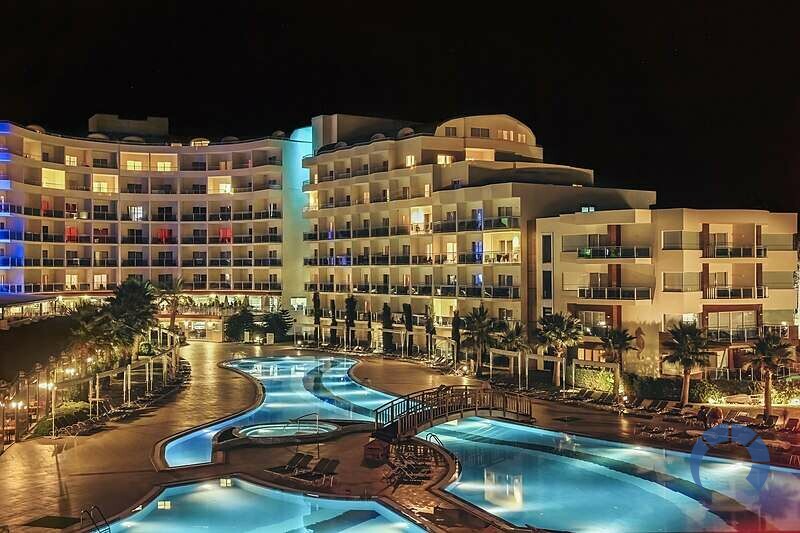
In the hospitality industry, the success of a hotel is often gauged by its Key Performance Indicators (KPIs). These metrics provide a comprehensive analysis of a hotel's performance, offering valuable insights into its overall effectiveness. This article will delve into 21 essential hotel KPIs, providing illustrative examples for each, and explaining their importance in the hotel business.
1. Hotel Occupancy Rate
This is a fundamental KPI that measures the percentage of rooms occupied in a hotel at any given time.
Example: If a hotel has 100 rooms and 70 rooms are occupied, the occupancy rate is 70%.
Importance: This KPI provides a snapshot of how well a hotel is attracting guests. A high occupancy rate indicates strong demand, while a low rate could signal a need for improved marketing or service.
2. Average Daily Rate (ADR)
ADR measures the average revenue earned per occupied room in a day.
Example: If a hotel earns $5000 from 50 occupied rooms in a day, the ADR is $5000/50 = $100.
Importance: ADR helps hotels understand their pricing strategy's effectiveness. It can indicate whether a hotel is pricing its rooms too high or too low.
3. Revenue Per Available Room (RevPAR)
RevPAR is a measure of the revenue generated by each available room over a certain period.
Example: If a hotel has 100 rooms and earns $10,000 in a day, the RevPAR is $10,000/100 = $100.
Importance: RevPAR helps hotels assess their revenue-generating efficiency. It takes into account both the room rate and the occupancy rate, providing a more comprehensive view of a hotel's performance.
4. Gross Operating Profit Per Available Room (GOPPAR)
GOPPAR measures the profit made from each available room before deductions for management fees and non-operating income and expenses.
Example: If a hotel has 100 rooms and makes a gross operating profit of $5000 in a day, the GOPPAR is $5000/100 = $50.
Importance: GOPPAR helps hotels understand their operational efficiency. It can indicate whether a hotel is managing its costs effectively.
5. Average Rate Index (ARI)
ARI measures a hotel's ADR relative to its competitors.
Example: If a hotel's ADR is $100 and the average ADR of its competitors is $80, the ARI is $100/$80 = 1.25.
Importance: ARI helps hotels understand their pricing position in the market. A high ARI indicates that a hotel is charging more than its competitors, while a low ARI could signal a need for a pricing review.
6. Market Penetration Index (MPI)
MPI measures a hotel's occupancy rate relative to the average occupancy rate of its competitors.
Example: If a hotel's occupancy rate is 70% and the average occupancy rate of its competitors is 60%, the MPI is 70%/60% = 1.17.
Importance: MPI helps hotels understand their market share. A high MPI indicates that a hotel is capturing a larger share of the market than its competitors.
7. Revenue Generation Index (RGI)
RGI measures a hotel's RevPAR relative to the average RevPAR of its competitors.
Example: If a hotel's RevPAR is $100 and the average RevPAR of its competitors is $80, the RGI is $100/$80 = 1.25.
Importance: RGI ensures you're receiving a good share of the market revenue in relation to your competitors.
8. Revenue Per Occupied Room (RevPOR)
RevPOR measures the total revenue earned from each occupied room, including other services like food and beverages, spa, laundry, etc.
Example: If a hotel earns $7000 from 50 occupied rooms in a day, including other services, the RevPOR is $7000/50 = $140.
Importance: RevPOR helps hotels understand their ability to generate additional revenue from their guests, beyond just room revenue.
9. Total Revenue Per Available Room (TRevPAR)
TRevPAR measures the total revenue earned from each available room, including all services.
Example: If a hotel has 100 rooms and earns $10,000 in a day from all services, the TRevPAR is $10,000/100 = $100.
Importance: TRevPAR helps hotels assess their overall revenue-generating efficiency, taking into account all sources of revenue.
10. Earnings Before Interest, Taxes, Depreciation, and Amortization (EBITDA)
EBITDA measures a hotel's operational profitability.
Example: If a hotel earns $1,000,000 in a year and has operating expenses of $750,000, the EBITDA is $1,000,000 - $750,000 = $250,000.
Importance: EBITDA helps hotels understand their profitability, excluding non-operational costs and financial expenses.
11. Net Revenue Per Available Room (NRevPAR)
NRevPAR measures the net revenue (after direct costs) earned from each available room.
Example: If a hotel has 100 rooms and earns net revenue of $8000 in a day, the NRevPAR is $8000/100 = $80.
Importance: NRevPAR helps hotels understand their revenue-generating efficiency after accounting for direct costs.
12. Average Length of Stay (ALOS)
ALOS measures the average number of days guests stay at a hotel.
Example: If a hotel has 50 bookings with a total of 200 nights stayed, the ALOS is 200/50 = 4 nights.
Importance: ALOS helps hotels understand their guests' staying behavior. A high ALOS could indicate guest satisfaction and loyalty.
13. Booking Lead Time
Booking Lead Time measures the average number of days between the date a booking is made and the guest's arrival.
Example: If a hotel has 50 bookings with a total lead time of 300 days, the average booking lead time is 300/50 = 6 days.
Importance: This KPI helps hotels understand their guests' booking behavior, which can inform marketing and pricing strategies.
14. Cost of Distribution
Cost of Distribution measures the cost incurred to distribute rooms through various channels.
Example: If a hotel spends $5000 on distribution and sells 100 rooms, the cost of distribution per room is $5000/100 = $50.
Importance: This KPI helps hotels understand the efficiency of their distribution channels. A high cost could indicate a need to review distribution strategies.
15. Guest Satisfaction Index (GSI)
GSI measures the overall satisfaction of guests based on reviews and feedback.
Example: If a hotel receives 200 reviews with a total score of 900 (out of a maximum of 1000), the GSI is 900/200 = 4.5 (on a scale of 1 to 5).
Importance: GSI is a crucial KPI that helps hotels understand their guests' satisfaction levels. High satisfaction scores can lead to repeat business and positive word-of-mouth, while low scores can indicate areas for improvement in service quality.
16. Customer Acquisition Cost (CAC)
CAC measures the total cost of acquiring a new customer, including marketing and sales expenses.
Example: If a hotel spends $5000 on marketing and sales and acquires 100 new customers, the CAC is $5000/100 = $50.
Importance: CAC helps hotels understand the efficiency of their marketing and sales efforts. A high CAC could indicate a need to improve marketing strategies or sales conversion rates.
17. Customer Lifetime Value (CLV)
CLV measures the total revenue a hotel can expect from a single customer over the lifetime of their relationship.
Example: If a repeat guest stays at a hotel five times a year, spending $200 each time, and continues this for ten years, the CLV is 5 * $200 * 10 = $10,000.
Importance: CLV helps hotels understand the value of retaining customers. A high CLV indicates strong customer loyalty and can justify higher spending on customer retention strategies.
18. Return on Investment (ROI)
ROI measures the profitability of an investment, calculated as the net profit from the investment divided by the cost of the investment.
Example: If a hotel invests $10,000 in a new marketing campaign and earns an additional $15,000 in revenue, the ROI is ($15,000 - $10,000) / $10,000 = 50%.
Importance: ROI helps hotels assess the effectiveness of their investments. A high ROI indicates a successful investment, while a low ROI could signal a need to review investment strategies.
19. Employee Satisfaction Score (ESS)
ESS measures the overall satisfaction of hotel employees.
Example: If a hotel conducts a survey of 100 employees and receives a total score of 450 (out of a maximum of 500), the ESS is 450/100 = 4.5 (on a scale of 1 to 5).
Importance: ESS is a crucial KPI for hotels, as satisfied employees are more likely to provide excellent service, leading to higher guest satisfaction.
20. Net Promoter Score (NPS)
NPS measures the willingness of guests to recommend a hotel to others.
Example: If a hotel surveys 100 guests and 70 rate their likelihood to recommend as 9 or 10 (out of 10), 20 rate it between 7 and 8, and 10 rate it 6 or below, the NPS is (70 - 10) = 60.
Importance: NPS is a key measure of guest satisfaction and loyalty. A high NPS indicates that guests are likely to recommend the hotel to others, leading to new business.
21. Channel Mix
Channel Mix measures the proportion of bookings that come from each distribution channel, such as direct bookings, online travel agencies (OTAs), or global distribution systems (GDS).
Example: If a hotel receives 200 bookings, with 100 coming from direct bookings, 50 from OTAs, and 50 from GDS, the channel mix is 50% direct, 25% OTAs, and 25% GDS.
Importance: Understanding the channel mix helps hotels identify their most effective distribution channels. This can inform decisions about where to invest marketing efforts and resources. A balanced channel mix can also help reduce dependency on any single channel and mitigate risks associated with changes in a specific channel's conditions or policies.
PHOREE Commercial Real Estate Team, headed by Munawar Abadullah, his expertise, network, and strategic approach make him a trusted deal maker in the hotel property acquisition market. By leveraging his extensive industry experience, strong connections, and masterful negotiation skills, he consistently delivers exceptional value for his clients. Moreover, his comprehensive use of the top 10 metrics to identify the most profitable hotel properties ensures that his clients invest in strategic assets with promising returns. With Munawar Abadullah at the helm, ultra-high net worth investors and hotel chains can confidently navigate the competitive world of hotel property acquisition and secure the best opportunities available.
Related posts:
Unlock Dubai property investment for Pakistanis with PHOREE. Expert guidance on buying, visas, and high-yield opportunities. Invest in Dubai real estate from Pakistan.
Unlock Dubai property investment opportunities with PHOREE. Expert guidance, transparent pricing, and high returns. Invest in Dubai real estate with confidence.

